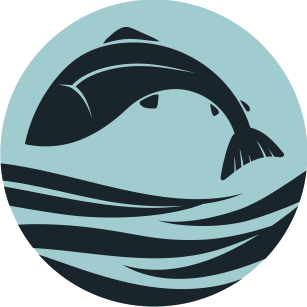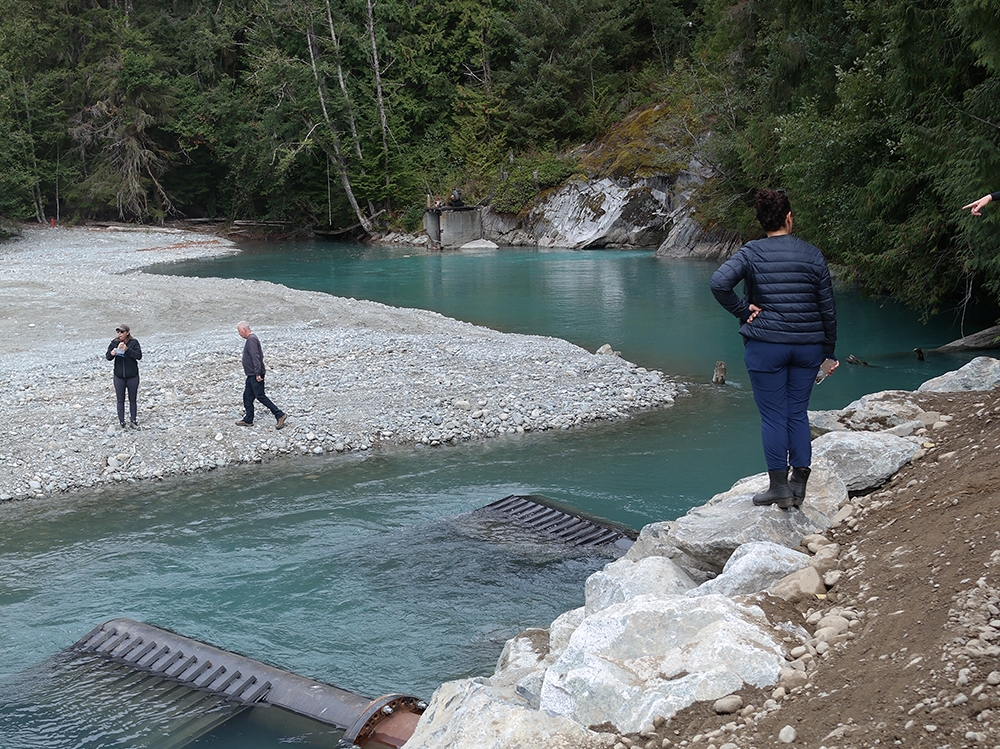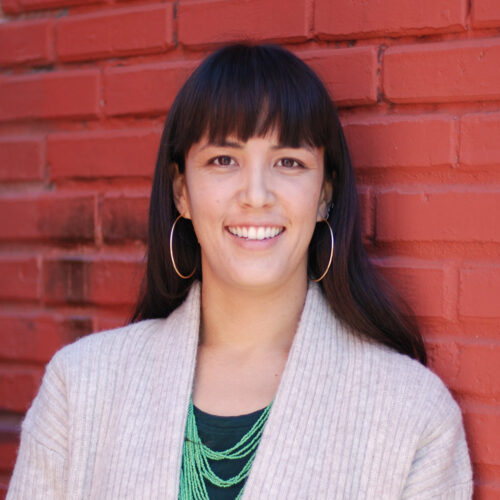Five questions with Claire Sauvage-Mar, Program Associate of the Healthy Watersheds Initiative
We caught up with Claire Sauvage-Mar, Program Associate with the Healthy Watersheds Initiative, for a Q&A before she headed off for maternity leave in November.
1. What new things have you learned during your time with HWI?
I've learned something new every day. I am extremely lucky and privileged to be able to say that, and it's all because the HWI project teams and my colleagues have been so generous with their knowledge since my first day. I've learned an immense amount about water science and in-stream restoration work – but I admittedly started with very little technical knowledge because my background is in political science and kinesiology. I started the HWI journey with a generalist appreciation of community health in relation to water and the basic understanding that freshwater issues affect everyone. From there, I was taught about the many factors that constitute a healthy watershed, the history of water governance and freshwater management in BC, and where water issues are being proactively worked on in our province. There have been fantastic, passionate teachers at every turn.
I've also learned how to pronounce the word slough properly. It was a small victory, but it felt important!

Glacial water in the Upper Pitt watershed
(Photo: Claire Sauvage-Mar)
2. What is a memory you’ll take with you from HWI?
I was very fortunate to visit the WWF-Katzie Upper Pitt River Restoration site in August at the beginning of the salmon run. It was a chance to meet the folks doing the on-the-ground restoration work and hear directly from them how the project was going. We visited a series of channels and pools that have been created as future salmon habitats. One pool, in particular, was filled with the most beautiful blue water I have ever seen. Ice fields and glaciers feed the Upper Pitt, and the water was the colour of bright blue Gatorade – in a good way! All of the visitors were commenting on how gorgeous the colour was. Several biologists were there to explain how the logs floating on the surface would provide excellent spawning habitat for salmonids because of the shade and hiding places they provided. I'll always remember that blue water.
3. What was the biggest surprise/ what opened your eyes?
My eyes have been opened to the accelerating timeline we're facing with climate change. This summer, the heat dome was an unnerving event, not only because it was so odd to be roasting here in Victoria but because it impacted the HWI projects that I heard from elsewhere in BC. For example, I was floored when I heard from the Golden Rod and Gun Club that the sudden heatwave had caused a nearby snowpack to melt – and release a fast-rising flood that inundated the restoration site! That snow should not have melted that quickly. Luckily, the incredible biologists and field team could incorporate Mother Nature's changes into their work plan and still achieve the project goals of restoring wetlands to create resilient watersheds and reinstate their natural ecosystem functions. We featured that story on page 26 of HWI's Our Water, Our Future Report, with site photos.
4. What was the biggest challenge during your time with HWI?
The biggest challenge was feeling up to the task. The mission of HWI – to support COVID economic recovery, promote healthy watersheds, advance UNDRIP implementation, and provide opportunities for skills development for workers new to restoration work – is a big one! It was daunting to be part of the team distributing $27 million in public funds for a light-speed project year, but there was lots of magic throughout 2021. For example, I was afforded the great honour of sitting in on HWI's Indigenous Leader's Advisory Circle (ILAC) meetings. I remember being so nervous about introducing myself to folks from the ILAC. My voice shook as I said my own name! It's incredible to be in the same space as those individuals I respect so much, and very humbling to have them guide the direction of HWI in so many ways.
5. What encourages you/gives you hope?
As a soon-to-be-parent, I feel a sense of extreme urgency around the need for collaboration to protect the waters and lands that I live on as an uninvited guest. I have been truly inspired by the folks I've met out in the field and feel hopeful that so many good people are working in the same direction. As Michelle Lewis, Natural Asset Technician in Gibsons, BC, told me, "Climate change is not a dress rehearsal!" She is so right: there's no time to lose, and I think that HWI has been an amazing opportunity to demonstrate how investment in watershed health can create long-term change. I am grateful to have had this professional opportunity as I head into a new chapter of my personal life.

Claire and her 'passenger' during a site visit to Katzie First Nation territory
(Photo - Zita Botelho)
Postscript – The HWI team is happy to share that in mid-November, Claire gave birth to a healthy baby boy.








